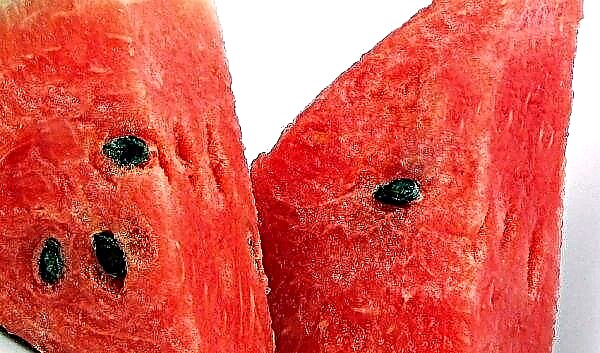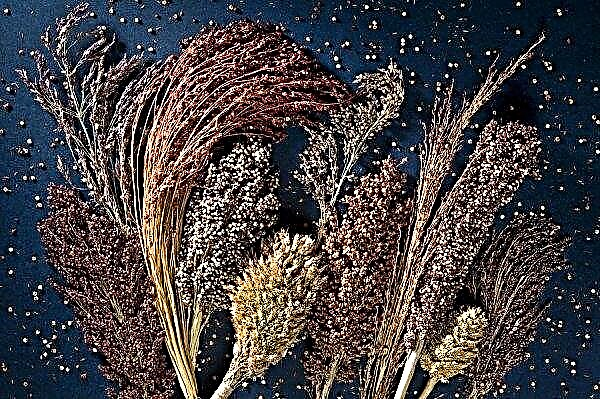Ear mite is a dangerous and common disease in animals. If this disease is not determined in time and treatment is not started, then as a result, the animal may begin to have severe complications and health problems, sometimes leading to death. Most often, this ailment occurs in rabbits, so their owners should carefully understand the treatment methods, symptoms and prevention of this disease in order to protect the health of their pets.
What does an ear tick look like in rabbits?
An ear mite, often called ear scabies, or psoroptosis, is an oval mite that has a yellowish tint, 0.5–0.8 mm long, affecting the inside of the ear, the walls of the auricle, and the middle ear of the pet.
Having settled in the animal’s ear, the tick begins reproduction and active egg laying, infecting and covering the inside of the ear with wounds. Each individual goes through 5 stages of development (egg, larva, protonymph, teleonymph, adult tick): the whole cycle takes from two to three weeks.
The life span of adult females is approximately 2 months. Outside the host organism, such parasites are able to live for 10–14 days, maintaining their viability at temperatures from +11 to +22 ° C, minus and too high temperatures are harmful to them. The disease is often accompanied by severe inflammation, itching and suppuration. In the neglected state, in the absence of treatment, it infects the brain of the rabbit with a tumor and can cause death.
The disease is often accompanied by severe inflammation, itching and suppuration. In the neglected state, in the absence of treatment, it infects the brain of the rabbit with a tumor and can cause death.
Did you know? Rabbits in Europe are the most popular pets after cats and dogs.
Ways and causes of infection
Based on the foregoing and understanding the seriousness of this disease, the question arises: where does the ear tick come from and what is the reason for its appearance.
Answering the first question, it should be noted that in rabbits, psoroptosis infection can occur in several ways:
- upon contact and contact of a healthy individual with an infected one;
- through animal care items;
- through the work clothes of the owner;
- through the cage in which the sick rabbit was previously.
The reasons for the development of ear scabies can be various factors:
- inappropriate conditions of detention, in particular, sparse cleaning in a cage;
- high humidity in the nursery;
- improper feeding and lack of vitamins;
- weakened immunity of the animal;
- cramped cage.
 It is noted that the most eared horrors are ailment in the spring and winter.
It is noted that the most eared horrors are ailment in the spring and winter.Symptoms
To diagnose the presence of an ear tick, it is important to closely monitor the rabbit: its anxiety is the first signal that something is wrong with it. In case of damage, the animal often shakes its head, worries and combes its ears.
The following symptoms are distinguished from the primary symptoms of infection:
- restless behavior;
- traces on the ears from combing;
- swollen ears of an animal;
- drooping ears down;
- weight loss;
- lack of appetite;
- in females there is a refusal to feed rabbits;
- males refuse mating.
If you notice these symptoms, you should resort to an external examination of the rabbit. It is very important to carefully examine the pet’s auricles.
The presence of an ear mite is expressed by such characteristics:
- the inside of the ear in bites;
- the appearance of red blisters;
- rabbit ears become hot;
- the appearance of brown spots;
- covering the surface of the auricle with a gray crust.
To accurately confirm the diagnosis, veterinarians conduct laboratory tests, after having done a scraping. This procedure can be carried out at home. It consists in detecting the presence of ticks or their eggs in the test material. To do this, warm the petrolatum oil to +40 ° C, put on it a previously taken scraping from the ear of the pet and using a magnifying glass carefully examine the material. Ticks, larvae and their eggs are very visible even under a magnifying glass. When confirming this diagnosis, immediate treatment is required.
To do this, warm the petrolatum oil to +40 ° C, put on it a previously taken scraping from the ear of the pet and using a magnifying glass carefully examine the material. Ticks, larvae and their eggs are very visible even under a magnifying glass. When confirming this diagnosis, immediate treatment is required.
How and how to treat an ear tick in rabbits
Having learned about the dangers of this disease and about its seriousness, the question involuntarily arises: how to get rid of this hated tick.
Treatment of a rabbit can be carried out both independently and with the help of qualified specialists, medications or folk. We will consider both ways. But before starting treatment, you need to clean the rabbit’s ear from scabs and scabs.
For this, the eared eater is firmly fixed, after which the affected areas are treated with a cotton swab dipped in petroleum jelly or in hydrogen peroxide. Having completely softened the crust in the ear, it is collected and disposed of with chlorine or burned in a fire.
Such a procedure should be done with gloves, carefully and carefully. After cleaning, you can begin to treat and treat the pet’s ears.
Did you know? The maximum recorded length of the rabbit's ears is 80 cm.
Veterinary products
Medicines that help in the treatment of psoroptosis can be of various types: drops, ointments, sprays, gels, solutions, injections. It is important that the drug of your choice brings maximum benefit and helps your pet. Among the huge selection of funds, experienced farmers and veterinarians recommend using these:
Among the huge selection of funds, experienced farmers and veterinarians recommend using these:
- Dekta, Amitrazin, Bars are drops that not only relieve symptoms, but also fight parasites. They treat the entire surface of the ear, after a week the procedure is repeated.
- “Chlorophos”, “Neocidol”, “Tsiodrin” - aerosols that are used at a distance of 10-15 cm from the ear of the infected person and are sprayed for 1-2 seconds on the areas affected by the disease.
- "Ivermectin", "Ivomek", "Ivermek", "Baymek" - drugs produced in ampoules. They are administered as an injection under the skin into the occipital part, the dosage should be previously agreed with the veterinarian.
- “Butox-50” - 1 ampoule is dissolved in 1 liter of water, after which each ear is sprayed several times with the resulting solution.
Important! All medicines must be used strictly as directed by the veterinarian.
Folk remedies
A folk type of treatment is used in the initial stages of the disease, and if medications work almost the first time, then this type of treatment will take a little longer. It should be noted that most rabbit breeders prefer the alternative method of treatment as the safest.
One of the most common and effective means is considered a mixture of turpentine and castor oil, mixed in equal parts. Such a mass is used to treat the inner part of the sick rabbit’s ear, making sure that the medicine reaches only the areas affected by the disease and does not flow deep into the ear. Other mixtures are used in the treatment, here are the recipes for some of them:
Other mixtures are used in the treatment, here are the recipes for some of them:
- kerosene and vegetable oil are mixed in a ratio of 1: 1;
- iodine is mixed with vegetable oil, and then alcohol is added (the amount of ingredients should be in equal parts);
- decoction of eucalyptus and chamomile;
- apply pure camphor oil, which acts in the first stages of infection and is applied with a cotton swab 3-4 times a day to the affected area.
Important! It is necessary to carry out treatment and apply drugs only in sterile rubber gloves.
When treating, do not forget to take care of disinfecting the rabbit's habitat, because if you do not, the risk of reinfection increases.
Prevention
Timely preventive actions help prevent the appearance of an ear tick, detect the disease at an early stage and cure the pet, while maintaining its health.
Here are the basic rules that you must follow to protect rabbits from ear scabies:
- Regularly inspect rabbit ears.
- Upon detection of an infected animal, it should be quarantined until it is fully recovered.
- Twice a year, complete a complete disinfection of cells. To do this, use a weak solution of tea tree oil, calcined salt or quicklime.
- Keep the cells clean. They should be clean and dry. Pay particular attention to ventilation.
- Provide quality and balanced nutrition to pets to maintain their immunity.
- Keep rabbits in spacious cages, avoid crowding.
- Having acquired a new pet, do not immediately plant it in a common cage, but keep it in quarantine for a couple of weeks and observe it.
- Inspect both representatives before mating.
 Summing up, it should be noted that the ear tick is a rather serious disease. Often, inexperienced rabbit breeders do not pay due attention to treatment, which can lead to the loss of the entire livestock. But with simple precautions, this disease can be avoided.
Summing up, it should be noted that the ear tick is a rather serious disease. Often, inexperienced rabbit breeders do not pay due attention to treatment, which can lead to the loss of the entire livestock. But with simple precautions, this disease can be avoided.Fortunately, there are many ways to treat this disease, the main thing: to detect it in time and act immediately.












